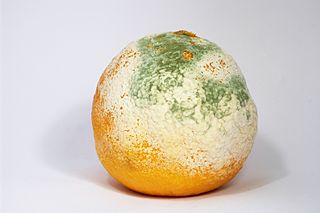For over 100 years, it was assumed that the penicillin-producing mould fungus Penicillium chrysogenum only reproduced asexually through spores.
An international research team led by Prof. Dr. Ulrich Kück and Julia Böhm from the Chair of General and Molecular Botany at the Ruhr-Universität has now shown for the first time that the fungus also has a sexual cycle, i.e. two “genders”. Through sexual reproduction of P. chrysogenum, the researchers generated fungal strains with new biotechnologically relevant properties – such as high penicillin production without the contaminating chrysogenin. The team from Bochum, Göttingen, Nottingham (England), Kundl (Austria) and Sandoz GmbH reports in PNAS. The article will be published in this week’s Online Early Edition and was selected as a cover story.
 Only penicillin producer
Only penicillin producer
About 100 years ago, Alexander Fleming demonstrated the formation of penicillin in Penicillium chrysogenum. To date, there is no other known producer of the antibiotic penicillin, which has an annual global market value of about six billion Euros.
Combining genes and breeding offspring with new properties
Not only animals and plants, but also many microorganisms such as fungi and algae can reproduce sexually. The advantage: the progenies possess a combination of genes from both mating partners and thus have new properties. Sexual reproduction in fungi is, however, not the rule. Most reproduce via spores which, in the case of moulds, occur as white, green or black deposits on spoiled food. These spores only bear the genes of one parent fungus. “Five years ago we already detected the existence of so-called sex genes in Penicillium chrysogenum“, says Prof. Kück. Now, the researchers have discovered specific environmental conditions in which the fungus actually reproduces sexually. The decisive thing was to breed fungal strains in the dark under oxygen deprivation conditions in a nutrient medium supplemented with the vitamin biotin. The offspring exhibited new properties, both at the molecular level, as well as in their phenotypes.
Results could be applicable to other fungi
Using so-called microarray analysis, the biologists also investigated the activity of all the approximately 12,000 genes of the mould fungus. The result: the sex genes control the activity of biologically relevant genes, for example those for penicillin production. “We presume that the findings can also be applied to other fungi”, says Ulrich Kück, “such as Penicillium citrinum and Aspergillus terreus that produce cholesterol-lowering statins, orPenicillium brevicompactum and Tolypocladium inflatum, which produce immunosuppressives that are used in all organ transplantations”. The researchers conducted the work in the Christian Doppler Laboratory “Biotechnology of Fungi” at the Ruhr-Universität with funding from the Christian Doppler Society (Vienna).
If our reporting has informed or inspired you, please consider making a donation. Every contribution, no matter the size, empowers us to continue delivering accurate, engaging, and trustworthy science and medical news. Independent journalism requires time, effort, and resources—your support ensures we can keep uncovering the stories that matter most to you.
Join us in making knowledge accessible and impactful. Thank you for standing with us!
